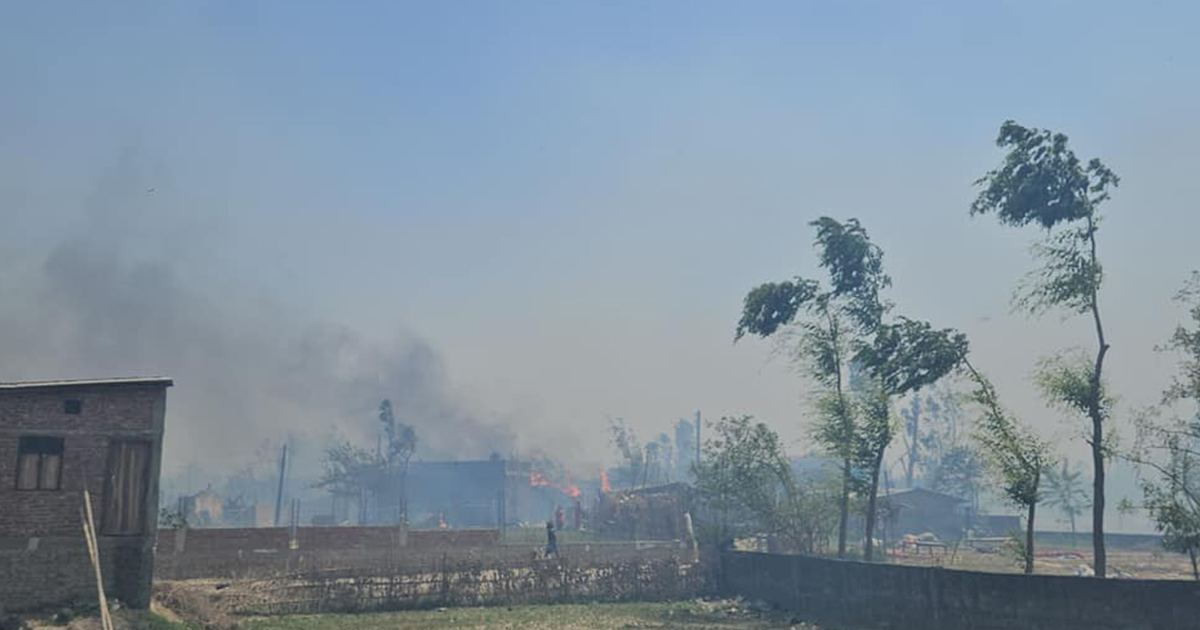
OR
Opinion


Basu Gautam
The author is the President and Founder of Lumbini World Peace Forum, as well as an activist in 1 Million Trees Plantation Drive in Nepal.news@myrepublica.com
More from Author
- The Green Economy: A Win-Win for People and the Planet
- Greening Our Path to Peace: The Link between Environment, Peace, and CSR
- Price of Progress: The Balance between Growth and Sustainability
- Ecological Principles and the Climate Crisis in Buddhism
- Living Sustainably to Ensure a Future of Sustainability
Nepal has experienced significant deforestation over the past few decades, with trees being cut down for fuel, timber, and agricultural expansion. This has led to a range of environmental problems, including soil erosion, loss of biodiversity, and an increase in greenhouse gas emissions. Reforestation can help to address these issues by restoring the natural balance of the ecosystem and mitigating the effects of climate change.
The need to cut carbon emissions and prevent climate change has never been greater, and planting trees is one of the most effective methods to do so. Trees absorb CO2 from the atmosphere, release oxygen, and provide a habitat for species. Trees are also an important element of the water cycle, contributing to climate regulation by releasing water vapor into the atmosphere via transpiration. Furthermore, trees cool the surroundings by providing shade and limiting the amount of heat absorbed by buildings and pavements.
The benefits of trees are commonly recognized, but the problem is the magnitude of reforestation operations required to combat climate change. While numerous large-scale forestry efforts exist across the world, planting one sapling at a time
may potentially have a big influence. Individuals, groups, and governments may all help mitigate climate change by planting trees. Businesses may also get involved by implementing sustainable forestry practices or engaging in carbon sequestration schemes. Nepal has experienced significant deforestation over the past few decades, with trees being cut down for fuel, timber, and agricultural expansion. This has led to a range of environmental problems, including soil erosion, loss of biodiversity, and an increase in greenhouse gas emissions. Reforestation can help to address these issues by restoring the natural balance of the ecosystem and mitigating the effects of climate change.
Importance of planting trees in urban areas
The fight against climate change and its harmful effects can be greatly aided by the planting of trees in urban areas. The crucial role that trees play in absorbing carbon dioxide from the atmosphere during photosynthesis can help to lower the atmospheric concentration of this greenhouse gas. Additionally, trees create oxygen, which is necessary for both human and animal life, and they aid in lowering pollution by enhancing air quality. Because trees regulate temperature, they also help to cool down cities, which lessens the need for air conditioning during the summer and lowers energy use and greenhouse gas emissions. By offering shade and reducing the heat produced by human activities like transportation and building construction, trees also help to lessen the impact of the urban heat island.
Urban tree planting provides various other advantages in addition to environmental ones. In urban locations, trees offer habitat for animals, which may boost biodiversity and enhance the health of ecosystems. Also, they raise the aesthetic value of the neighborhood and can foster a feeling of neighborhood and social cohesiveness. Hence, planting trees in urban areas is a crucial step in reducing the effects of climate change and making a world that is more sustainable and livable for people and other species.
Urban forestry is a management approach that involves planting, maintaining, and managing trees and green spaces in urban environments. One of the main benefits of urban forestry is its ability to mitigate pollution and improve air quality. Trees can absorb pollutants such as nitrogen oxides, ozone, and particulate matter, which can have negative impacts on human health. By increasing the number of trees in urban areas, maintaining existing trees, and using the right tree species, urban forestry can help reduce the number of pollutants in the air. Additionally, creating green spaces such as parks and other areas can provide habitats for trees and other vegetation, which can also help improve air quality and reduce urban heat islands.
Using urban forests to combat pollution
Proper urban forestry practices can help cope with pollution in urban areas. By planting more trees and using the right species, urban forestry can help absorb pollutants and improve air quality. Moreover, maintaining the existing trees through regular pruning and fertilization can ensure they remain healthy and effective at absorbing pollutants. Creating green spaces through urban forestry can also provide additional benefits such as reducing urban heat islands and improving overall urban biodiversity. Overall, urban forestry can be a sustainable and effective way to mitigate the negative impacts of pollution and improve the health and well-being of urban residents.
Trees and biodiversity in urban areas
In urban environments, trees are crucial to maintaining biodiversity. They support a wide range of species, work as habitat and food sources, and can lessen the damaging effects of human activities like pollution and land development. To encourage biodiversity in urban environments, a wide variety of tree species must be planted, existing trees and green spaces must be preserved and protected, and green infrastructure must be developed.
Moreover, trees in cities may enhance air quality, lessen the impact of the urban heat island, and add aesthetic and recreational value. They can serve as natural channels, connecting various green areas and facilitating the migration of species across habitats. Urban ecosystems can be made healthier, more resilient, and more sustainable by promoting biodiversity, which will benefit both human and non-human species.
Govts, corporations, and citizens’ participation in urban reforestation
Governments play a crucial role in urban reforestation by developing policies and programs that promote tree planting and conservation. Governments can also provide financial incentives, such as tax credits, grants, and low-interest loans, to individuals and businesses to encourage tree planting and maintenance. Furthermore, governments can regulate the use of green spaces, ensuring that they are protected and well-maintained.
Successful urban reforestation initiatives require the participation and cooperation of individuals, businesses, and governments. By working together, we can create a more sustainable and healthier urban environment that benefits everyone. Businesses can contribute to urban reforestation by incorporating trees and green spaces into their development plans. For instance, a business can plant trees around their property, create green roofs, or install vertical gardens. This not only helps to improve air quality and reduce the urban heat island effect but can also provide a more attractive and welcoming environment for employees and customers.
Individuals can play a significant role in urban reforestation by taking part in community tree-planting events, supporting local organizations that promote tree planting, and caring for the trees in their yards. By actively participating in urban reforestation, individuals can help create a healthier and more sustainable urban environment.
In conclusion, the challenge of pollution in urban centers, like Kathmandu in Nepal, is a critical matter that must be addressed immediately. The problem of urban air pollution can be reduced with the simple yet effective approach of planting trees. The overall quality of life in metropolitan areas is improved by trees, which also offer shade and absorb harmful toxins from the environment. Thus, it is essential to give urban center tree planting priority to combat rampant urbanization and worsening pollution. This would not only enhance the environment but also improve the health and wellness of the people living in these places. Governments, businesses, and citizens must band together to make our cities cleaner and greener.
You May Like This

Federalism: learning by doing
Issues have emerged regarding effective implementation of federalism. But there is a long way to go and these issues can... Read More...

Govt should prioritize Miss Nepal: Miss Nepal Shrinkhala Khatiwada
MAKWANPUR, April 24: Newly crowned Miss Nepal World 2018, Shrinkhala Khatiwada has urged the government to prioritize the pageant as... Read More...

Party's name will be Nepal Communist Party after merger: Leader Nepal
KAILALI, Feb 9: CPN-UML leader Madhav Kumar Nepal said that the name of the new party after merger between CPN-UMLand... Read More...





Just In
- World Malaria Day: Foreign returnees more susceptible to the vector-borne disease
- MoEST seeks EC’s help in identifying teachers linked to political parties
- 70 community and national forests affected by fire in Parbat till Wednesday
- NEPSE loses 3.24 points, while daily turnover inclines to Rs 2.36 billion
- Pak Embassy awards scholarships to 180 Nepali students
- President Paudel approves mobilization of army personnel for by-elections security
- Bhajang and Ilam by-elections: 69 polling stations classified as ‘highly sensitive’
- Karnali CM Kandel secures vote of confidence














Leave A Comment